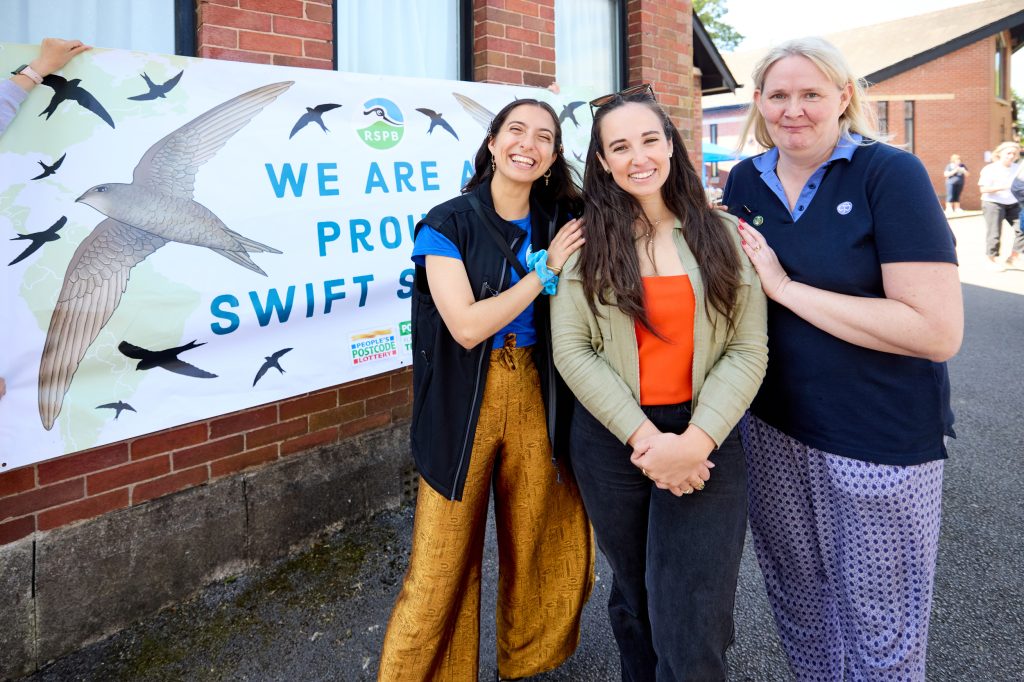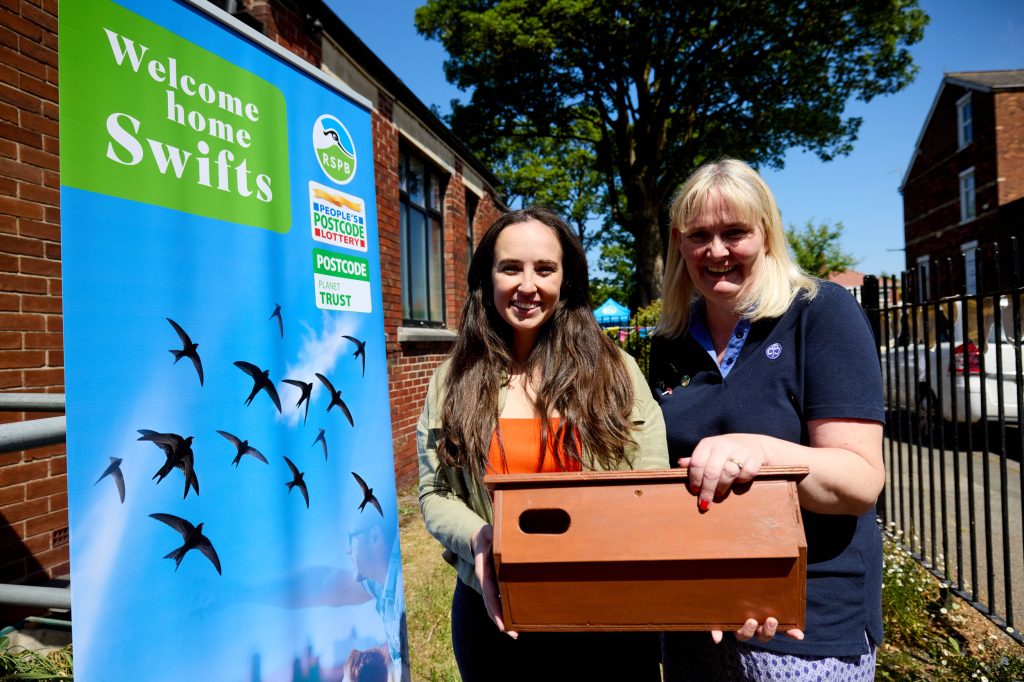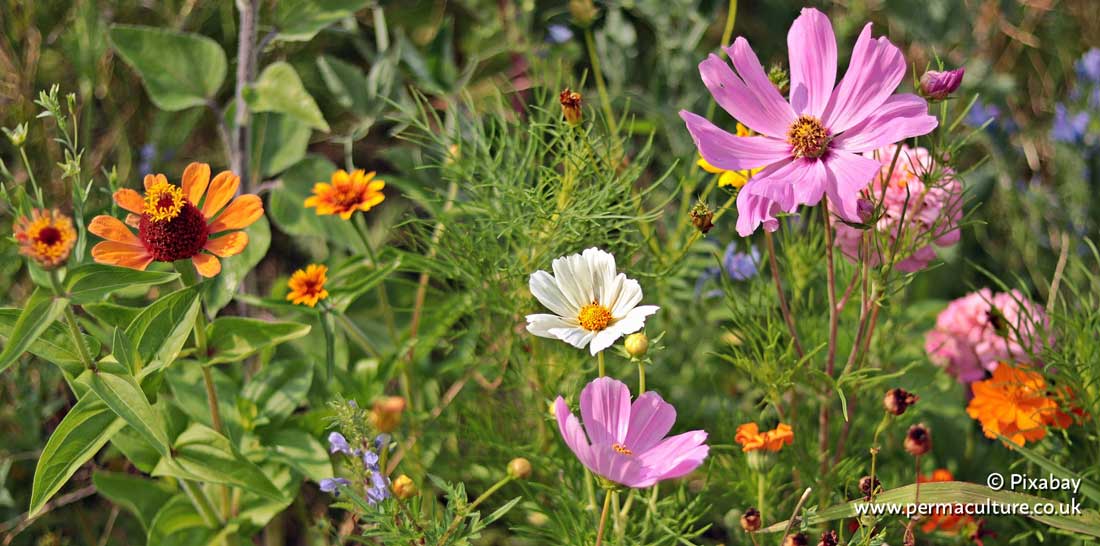My name is Suzanne Pendleton and I live in Swinton, Salford (UK) and have been involved in the Greater Manchester Swift Street initiative since August 2024, which has been led by the RSPB.
During lockdown I started to value my time outside as so many families did too. I enjoyed time in our little garden more and spotted some birds as they zoomed and screamed over the house. I wasn’t quite sure what they were and asked my friend Kathleen who lived on a surrounding road what they might be. She enlightened me. They were Swifts, a species recently added to the UK’s Red List of birds, meaning they are now amongst our most threatened. Then the summer was over and the swifts left Swinton heading back to Africa.
Each year since, I have eagerly anticipated the return of the Swifts. My understanding grew and I learnt of their declining numbers, now less than 60,000 breeding pairs in the UK. Along with developing a stiff neck constantly looking up to the sky, watching their incredible aerial manoeuvres.
I am privileged to live in a friendly neighbourhood on our lane. The community are always up for helping, and we pull together to help each other. We have a community messaging service which came into its own in lockdown, and continues to be a fabulous way to share information and request help and advice.
During the last few years I had messaged our community group and asked if anyone knew about our Swifts and where they were nesting. Initially we were unsuccessful in understanding, but in spring 2024 we struck lucky and finally worked out the eaves where they lived. I’d also discovered Swift Mapper (an app for recording the location of Swift nesting sites) enabling us to understand we had four nest sites on the Lane and surrounding roads.
We also realised that there was another small colony locally less that 1/4 mile away. Last August, a resident of this local road got in touch to say Roshni (Parmar-Hill, Community Engagement Officer) from the RSPB had been to visit their colony. She asked if we’d be interested in getting involved with developing our Swift Street – thanks to funding from players of People’s Postcode Lottery – and I eagerly accepted the offer. We used our community messaging group to share the news of the Swift Street development and I was overwhelmed by the local response. So many families were keen to help our Swift population, with more than 80 boxes requested. I think the consensus was that we are so privileged that these incredible urban birds choose our lane as their home, and as their nesting places can be threatened by redevelopment, having the opportunity to install boxes is a wonderful chance to do something proactive to help.
Roshni and I visited local homes who had expressed interest, helping families select potential sites for their boxes to be positioned. With Roshni’s guidance we talked about what Swifts need and I and residents began to understand more about how Swifts live. They are remarkably compatible with humans, don’t need a bird bath, bird table etc. as they feed on insects on the wing. I discovered along with other residents that the best way we could help our Swifts was to protect their current nesting sites, add boxes for more birds to nest in and to do all we could to support insect populations. For example, considering planting in our gardens to promote insect life, adopting No Mow May and not using insecticides. Those who weren’t able to install a box could instead help in other ways, so this made the project accessible for all – everyone could join in.

Next came the production of the boxes. Roshni contacted local colleges and we were thrilled when a local skills centre suggested their joinery students could make these free of charge. Production began and numbers of those interested had grown as the message about the project spread, and so 100 boxes were produced.
Meanwhile, local guiding groups learnt of the initiative and Roshni visited the groups that I lead, as Brown Owl – 90 girls and young women were keen to learn about Swifts and how they could help. The groups were already keen to learn about environmental matters, and this project really whetted their appetite. The Brownies, Guides and Rangers designed posters, made seed bombs and grew in their understanding of our Swifts. Once the production of the boxes was finished the Brownies, Rangers and Guides got stuck into painting them with an environmentally friendly product which would protect the boxes, and a local lady Haldis (a RSPB Swift Champion, a voluntary role which supports local conservation efforts to protect the species) made the nest cups which would be inserted into each box.
We arrived at installation day on Saturday 8th March, with 25 boxes going up on that first day. By the end of March, 80 had been erected by a local roofer, Ryan.

Of course, we needed to celebrate the returning of our precious Swifts and so we began planning our community event. Volunteers came forward from the surrounding roads and we met in a resident’s kitchen each Wednesday, so all could contribute ideas. Other local guiding groups wanted to contribute and so they made nature-themed bunting, and we were thrilled when the church on the lane offered their venue as a space for us to celebrate. The local dance and drama group wanted to be involved and so their leaders and young people planned songs and a drama production with poetry. And as if we weren’t already exciting enough, we then heard the news that RSPB Ambassador Megan McCubbin would love to come along to formally open our Swift Street.
We were blessed with glorious sunshine on 17th May, with a fantastic community event. Sixty families made bee hotels, children had Swift-themed face paint, and a plant swap was popular. RSPB provided and led crafts, and local artists supported youngsters to make Swift puppets. More than 300 residents attended and watched the young people perform. The ribbon was cut revealing a beautiful Swift Street banner created by a local artist, alongside Swift boxes 99 and 100 positioned proudly on the front of the church. And yes, we had Swifts soaring high above us all day (perhaps watching the proceedings?) to the delight of the watching children and residents. As the street party continued into the evening we couldn’t believe our eyes when a ‘banger’ (a young Swift, which gets its name from its tendency to bang against prospective nest to check if they’re occupied or not) attempted to enter one of the newly positioned boxes. A perfect end to a fabulous day.


It’s been an absolute honour to be involved in this project and I feel so lucky that our community have been able to do something practical to support our local Swifts.











